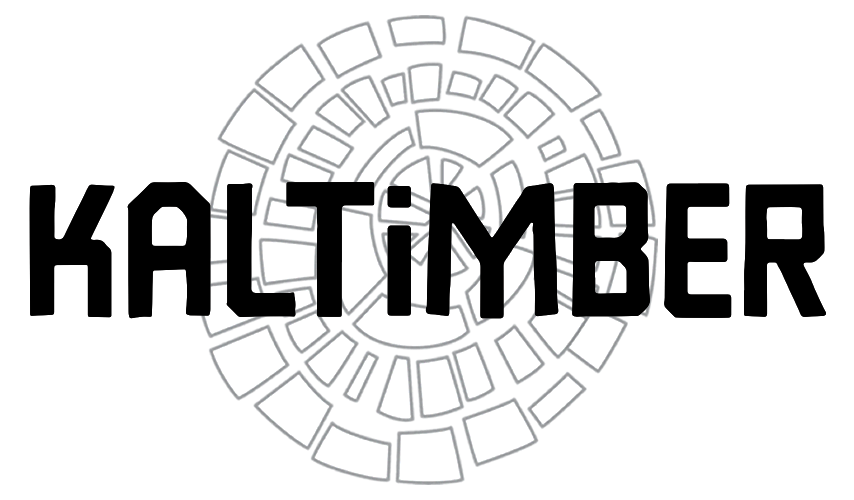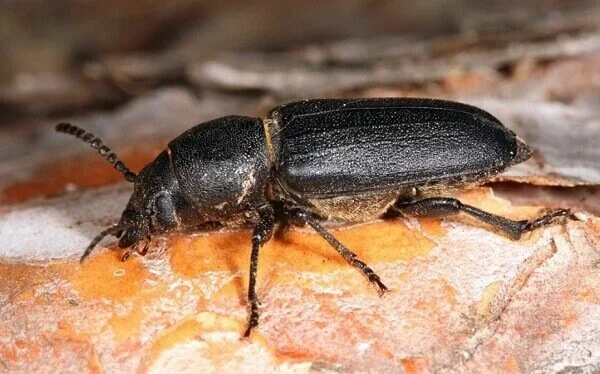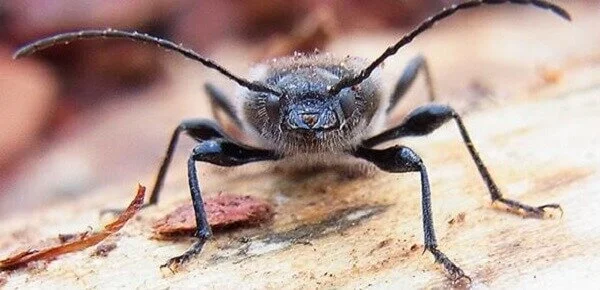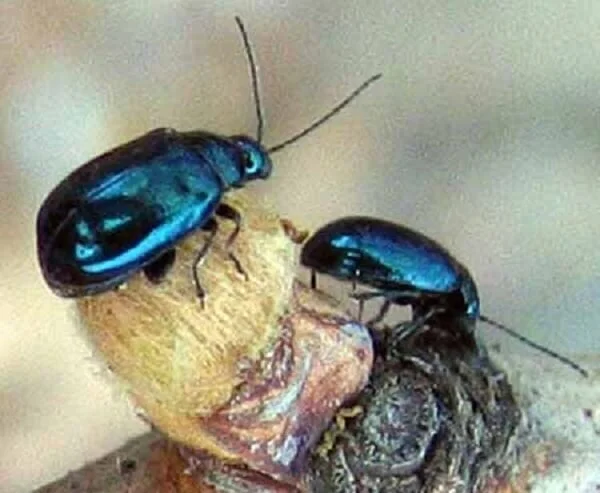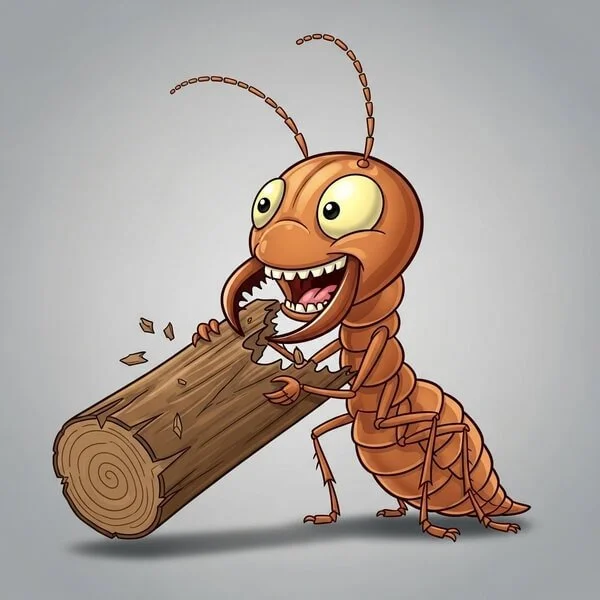The Complete Guide to Wood-Eating Insects and Timber-Damaging Pests.
Explore the most common insects that damage wood—from woodworms to termites—and learn how they infest timber structures, furniture, and flooring. Perfect for identifying pests and understanding their destructive habits.
Wood is a beautiful, sustainable, and durable material—until it's attacked by wood-eating pests. Whether it's antique furniture, hardwood flooring, or structural beams, no timber is entirely safe. This guide combines both parts of our earlier articles into a single, comprehensive source on the most common wood-damaging pests and how to protect your timber from them.
Woodworms—wood-boring beetle larvae—are among the most common culprits. These pests tunnel through wood as they grow, leaving behind powdery frass and exit holes. If you've spotted signs of wood damage, frass, or suspicious holes, you're likely dealing with one of these invaders.
For most pests listed below, we recommend natural treatments such as those from our partners at Freemite. For more advanced infestations, consult a professional.
Woodboring Weevil
Appearance: Adults are reddish brown to black, 2.5–5mm in length, with long snouts and cylindrical bodies. Larvae are creamy white, C-shaped, wrinkled, and legless.
Lifecycle: Females lay eggs in pre-formed holes. Larvae tunnel in wood for 6–12 months and pupate near the surface for 2–3 weeks. Adults live over a year.
Habits: Prefers damp and decaying timber, especially wood affected by cellar fungus. Infestations may spread to healthier surrounding wood.
Is a wood eater dangerous?
Yes. Woodboring weevils damage damp wood, potentially weakening timber integrity.
Bamboo Borer
Appearance: Dark brown, plump, 2–3.7 mm. Antennae have large clubbed segments. Elytra have bristly hairs.
Lifecycle: Females lay 27–35 eggs. Larvae undergo up to 4 stages inside bamboo and pupate within. Lifecycle as short as 60 days.
Habits: Attacks bamboo and sometimes cassava. Leaves perfectly round exit holes after tunneling.
What are wood eaters called?
They are wood-boring insects like beetles, termites, and larvae (commonly called woodworms).
Powderpost Beetle
Appearance: Red-brown adults around 5mm long. Larvae are creamy white, up to 6mm.
Lifecycle: Eggs laid in hardwood pores. Larvae tunnel for up to 10 years, pupate near surface, and emerge June–August.
Habits: Larvae cause extensive damage to flooring, joinery, and wood products.
How to tell if you have woodworms?
Look for frass (fine powder), small round holes, and weakened wood structure.
Is eating wood healthy?
No. Humans can't digest cellulose and gain no nutrients from wood.
Bark Borer
Appearance: Small beetles (3–6mm), reddish to chestnut brown, covered in silky hairs.
Lifecycle: Eggs laid in bark crevices hatch in 2–3 weeks. Adults emerge May–August.
Habits: Infest unbarked softwoods, like pergolas and fence posts. Not structurally damaging.
Can you feel mites crawling on you?
No, wood mites are too small and do not infest humans.
Common Furniture Beetle
Appearance: 3–4mm brown beetles with humped thorax. Larvae live hidden in wood.
Lifecycle: Develops best around 22–23°C.
Habits: Infests wood furniture, not stored food. Common in old timber structures.
Are wood mites harmful to humans?
No, they do not bite or spread diseases.
More Wood-Eating Invaders
We continue with four more woodworm species you should know to protect your timber.
House Longhorn Beetle
Appearance: Adults 8–25mm, black or brown with gray hairs. Larvae up to 35mm, grayish-white.
Lifecycle: Females lay eggs in summer/fall in wood cracks. Larvae tunnel for 3–11 years.
Habits: Infests seasoned softwoods, especially sapwood. Can arrive via imported wood packaging.
What is the most destructive wood-eating pest?
Termites and longhorn beetles are among the worst. Their larvae tunnel deeply, compromising structural integrity.
Wharf Borer
Appearance: 7–14mm, yellow-brown with black-tipped elytra and longitudinal ridges.
Lifecycle: Eggs laid on wet, decaying timber. Larvae bore for ~9 months and emerge in summer.
Habits: Infests damp wood, including timber under concrete or exposed to leaks.
How to stop wood from being eaten?
Control moisture, seal wood, use treated timber, and inspect regularly.
Deathwatch Beetle
Appearance: Adults 5–7mm, reddish-brown with scale-like hairs. Larvae up to 10mm, cream-colored with golden hairs.
Lifecycle: Females lay 40–60 eggs in wood cracks. Larvae tunnel 5–10 years before emerging.
Habits: Targets hardwoods (esp. oak), especially when fungal decay is present. Common in historic buildings.
What kills wood eaters?
Fumigation, heat, cold, borate solutions, and natural insecticides are effective.
Steely Blue Beetle
Appearance: Shiny blue beetles around 4mm long.
Lifecycle: Eggs laid on or near infested wood. Larvae feed on other wood-eating insect larvae.
Habits: Predator of common furniture and deathwatch beetles. Presence suggests heavy infestation.
Can you get rid of borers?
Yes. Borate treatments, sealing wood, and professional pest control help eliminate borers.
Termites
We all (unfortunately) know what these little pests look like—so here’s a funny drawing to lighten the mood before they eat our wood stock!
Appearance: Termites are soft-bodied, ant-like insects, usually pale or creamy white. They live in colonies with distinct castes: workers, soldiers, and reproductive kings and queens.
Lifecycle: Termites reproduce quickly. Queen termites lay thousands of eggs yearly. Nymphs develop into workers, soldiers, or reproductives depending on the colony's needs.
Habits: Subterranean termites build mud tubes and feed on cellulose within wood, often from the inside out—leaving timber hollow and structurally weak. Drywood termites live inside wood itself, requiring no soil contact.
How do I tell if I have termites?
Look for mud tubes, soft or hollow-sounding timber, blistered wood surfaces, and discarded wings near windows.
What is the most destructive wood-eating pest?
Subterranean termites—they silently consume wood 24/7 and can collapse buildings if left untreated.
Final Tips for Wood Protection
Use kiln-dried or treated timber for construction and furniture.
Ensure good ventilation and moisture control.
Apply sealants and protective finishes.
Inspect regularly for frass, boreholes, or tunneling.
Use natural solutions (like Freemite) or consult experts for severe infestations.
What kills wood-destroying fungus?
Remove moisture sources, improve airflow, and apply specialized fungicides.
Is wood good for your body?
No. Wood is indigestible and can be harmful if consumed.
Keep your wood beautiful, strong, and pest-free with proper care and vigilance. For eco-friendly reclaimed wood and expert timber advice let us know!
